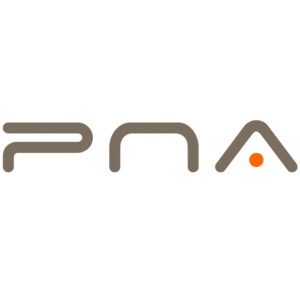Abstract: This paper proposes a 5G overlapping coverage optimization system based on NGI and AAPC, which can solve the problem that the traditional overlapping coverage optimization scheme cannot locate the interfering cell. This system makes overlapping coverage optimization more accurate and comprehensive. At the same time, combined with the AAPC weight self-optimization tool, it realizes automatic adjustment of weights, thereby significantly improving work efficiency. The introduction of this innovative system will bring important progress to the field of future network optimization and provide new ways and directions for improving and optimizing network performance.
As the scale of 5G continues to expand, the network structure becomes more and more complex, and the distance between base stations in urban areas becomes smaller, which leads to the increasingly prominent problem of overlapping coverage. Traditional overlapping coverage analysis methods can usually only determine highly overlapping cells, but cannot find related interfering cells. Therefore, it is necessary to explore and introduce more advanced technologies and tools, such as the 5G overlapping coverage optimization system based on NGI and AAPC mentioned in the article, to solve this problem. Through the application of this new system, interfering cells can be located more accurately, and the accuracy and efficiency of overlapping coverage optimization can be improved, thereby improving the performance and user experience of 5G networks.
I. Principle Introduction
1. DOA principle
The principle of Direction of Arrival (DOA) positioning technology is to use the array antenna and DOA estimation technology at the receiver to determine the DOA line of the signal from the receiver to the source, and to perform triangulation through the DOA estimated by multiple receivers to determine the estimated position of the source. DOA estimation is also called angular spectrum estimation and angle of arrival estimation. In wireless communications, the DOA function can be used to describe the actual coverage angle of the antenna and the direction deviation of the user. In essence, it is based on the characteristics of MIMO multi-antenna transmission and reception, and uses space-time processing technology to measure the angle of each terminal user relative to the antenna. By aggregating and analyzing massive data, the main gathering direction of the user group is determined, and the coverage direction of the antenna is adjusted to follow the user’s behavior trajectory to provide the best service for more users.
2. NGI Principles
NGI (Network Geolocation Insight) is an innovative solution for “planning, construction, maintenance and optimization” in wireless networks. It mines and analyzes user and network wireless data to achieve comprehensive analysis and geographical display of network performance, service quality, terminal capabilities and user experience. NGI’s functions can be divided into seven categories according to the scenario type: drive testing, geographical insights, network planning and optimization, public services, terminal analysis, problem location, and user analysis. At present, the main commonly used functions include antenna and feeder verification, network visualization evaluation, and virtual drive testing, among which the core is the practical application of the DOA function.
3. Basic principles of AAPC
AAPC (Massive MIMO Antenna Weight Adaptation) is a solution that uses artificial intelligence technology to optimize antenna weights. The base station collects user positioning information such as HDOA (horizontal direction of arrival), VDOA (vertical direction of arrival), PL (path loss), etc., completes modeling based on these data, and then uses the weighted path optimization algorithm to calculate the optimal weight for each user distribution scenario, thereby maximizing the user’s coverage level. By continuously iteratively optimizing the antenna weight model, the optimal antenna weight solution is finally formed to help improve the performance of the wireless network and user experience.
II. 5G Overlapping Coverage Optimization System Based on NGI and AAPC
The NGI and AAPC tandem optimization overlapping coverage system can accurately analyze the disturbed cells and disturbing cells, clearly display them geographically, and provide accurate optimization solutions. Through tandem optimization with AAPC, the system can automatically adjust the weights to the optimal solution without manual intervention, which improves the adjustment efficiency. This method can effectively solve the problems in overlapping coverage optimization and improve network performance and user experience.
1. System Principle
In the 5G overlapping coverage optimization system based on NGI and AAPC, the NGI module is responsible for identifying overlapping coverage cells and taking the serving cell and its surrounding TOP6 neighboring cells as the objects of AAPC optimization adjustment. The NGI module provides necessary data support for subsequent optimization by analyzing the overlapping coverage area. The AAPC module first abstracts the overlapping coverage problem into a DOA (direction) grid for better identification. Then, by converting the cell information into an image, the overlapping coverage grid is filtered as an evaluation object. The AAPC module uses a multi-objective approach to find the optimal weight solution, thereby adjusting the antenna parameters and optimizing the network performance to solve the interference problem caused by overlapping coverage.
2. System advantages
①NGI overlapping coverage analysis does not rely on drive testing and can accurately locate interference cells with high overlapping coverage. Traditional overlapping coverage analysis usually requires a network test to analyze the interference caused by high overlapping coverage through test records. NGI overlapping coverage analysis can use MR (Measurement Report) data to evaluate areas and cells with overlapping coverage problems in the network, and then output interference source cells and disturbed cells. This method eliminates the reliance on drive test data, makes up for the deficiency of traditional overlapping coverage analysis in accurately locating interference sources, and provides important data support for RF optimization and adjustment.
②AAPC optimization is smarter and more efficient. Traditional RF optimization is limited to adjusting the azimuth and downtilt angles of the antenna; the introduction of 5G Massive MIMO large-scale array antennas increases the possibility of three-dimensional beam adjustment. Although people can set beam weights based on experience, this requires a lot of effort, is inefficient, and the weights cannot be accurately adjusted as the user’s position changes dynamically. In contrast, AAPC realizes dynamic adjustment of beam weights through intelligent optimization algorithms, which can accurately cover target users, improve network perception capabilities, and make beam optimization smarter and more efficient.
③ Save labor costs. After AAPC intelligent beam optimization, some 5G base stations no longer need to be manually adjusted by engineers on the tower, which effectively saves human resources and reduces the frequency of engineers going up the tower and related safety risks; at the same time, intelligent and automated weight optimization also reduces the network management operations of traditional beam adjustment, achieving the goal of reducing labor costs.
3. Optimize the process
5G MR data collection: Select the area that needs to be optimized, configure relevant parameters through the UME network management, and issue measurement configurations to the base stations in the area to collect relevant information such as measurement reports (MR) and angle of arrival (DOA) of user terminal equipment.
NGI problem cell output: Set overlapping coverage judgment conditions, use NGI to evaluate overlapping coverage problem areas and cells in the network, analyze the interfering cells and disturbed cells in the overlapping coverage area, and count the overlapping coverage level of each grid. Provide data support for RF optimization and adjustment, and output the serving cells and TOP6 neighboring cells that need to be optimized and adjusted as AAPC optimization objects.
AAPC optimization template creation: Combine overlapping service cells and TOP6 neighboring cells and assign an ID to each group to achieve refined clustering optimization of AAPC.
AAPC optimization parameter distribution: The optimization object is selected as the “problem cell”, imported into the AAPC module, and the AAPC parameter configuration is set to achieve automatic parameter adjustment of AAPC without manual intervention.
Evaluation before and after NGI optimization: After AAPC parameter optimization and adjustment, use NGI to re-output overlapping coverage data indicators and layers, and compare the effect evaluation with the data before adjustment.
Network management indicator evaluation: After the overlap coverage optimization is completed, a comparative evaluation is conducted through network management performance indicators, business volume, number of users, perceived rate, coverage rate and other indicators to measure the effects before and after the adjustment.
4. Functional deployment
① Create NGI coverage problem. Enter the NGI platform, select Network Geographic Insight → Task Type → Geographic Insight → Coverage Problem Analysis → Overlapping Coverage → Coverage Problem Template, and fill in the relevant parameter configuration according to the template.
② Import AAPC problem cells. Enter the AAPC module to create a new optimization task, select “problem cells” for optimization, and fill in relevant content according to the system template. Note that the Cluster ID column has a custom ID, and an ID is assigned according to the NGI overlapping coverage cells and the corresponding TOP6 disturbed cells, so that AAPC can achieve refined cluster optimization.
III. Effect Verification
1. TOP Cell Optimization Verification
Taking the cells with overlapping coverage problem sampling points exceeding 15% as the top threshold, we collected MR data of 7423 cells in Jining 2.6G in the last three days for analysis and output 46 top cells. We used AAPC to optimize the weights of the TOP15 cells, involving a total of 90 cells (15 groups, each with 1 problem cell + 6 disturbing neighboring cells).
Effect comparison: 3 days of MR data were collected before and after AAPC optimization. The overlapping coverage decreased by 5.25%, the traffic increased by 85.75GB, the downlink perceived rate increased by 13.46Mbps, and the coverage did not change significantly.
Deployment effect through NGI platform and network management indicators: After Jining deployed high overlapping coverage cells, the overlapping coverage rate was reduced from 16.40% before adjustment to 11.15%, an increase of 5.25pp, and the downlink user perceived rate was increased from 215.2Mbps to 228.7Mbps, an increase of 13.5Mbps, achieving the expected effect and effectively improving the quality of 5G network.
2. Overlapping area optimization verification
The proportion of problem sampling points in overlapping cells exceeds 10% of the cells. The 2.6G overlapping areas in Jining Wenshang and Sishui have been optimized and adjusted, totaling 721 cells (103 groups, each with 1 problem cell + 6 disturbing neighboring cells).
Coverage comparison: 2 days of MR data were collected before and after AAPC optimization. As shown in Table 2, the overall overlap coverage ratio was significantly improved after adjustment, and the overlap coverage was reduced from 14.18% before adjustment to 11.26%, an improvement of 2.92%. There was no significant improvement in the coverage rate.
Perception indicators: After AAPC optimization and adjustment, there was no significant increase in the number of users and traffic, and the downlink perceived rate increased from 273.5 before adjustment to 280.5 Mbps, as shown in Table 3.
Performance indicators: After AAPC optimization and adjustment, the performance indicators had no obvious fluctuations and were positive, see Table 4.
IV. Conclusion
The application of the NGI overlapping coverage module solves the problem that traditional overlapping coverage cells cannot accurately locate interfering cells, and realizes the geographical display of overlapping coverage problem areas and cells, so as to accurately and comprehensively evaluate overlapping coverage problems. On this basis, the AAPC weight self-optimization tool is connected to realize the rapid import of problem templates and automatic optimization of parameters, making optimization and adjustment more efficient. The connection between NGI and AAPC provides effective tool support and significantly improves the efficiency of 5G overlapping coverage optimization. This integration method provides an intelligent solution for network optimization, helping network operators to better deal with overlapping coverage problems and improve network performance and user experience.


